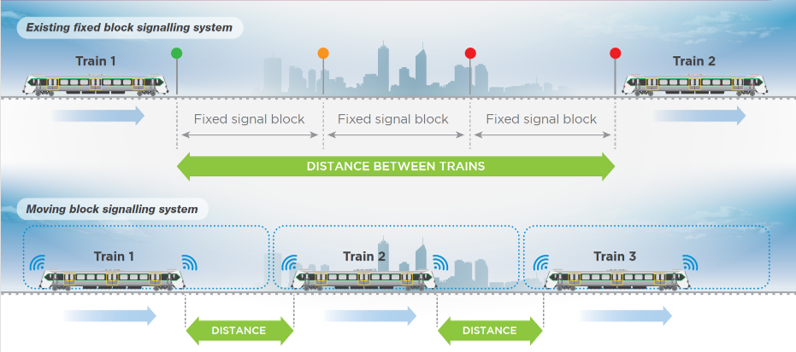Perth’s urban rail network currently uses an Automatic Train Protection (ATP) system to maintain safe speeds and distance between trains. The existing ATP system is approaching its end-of-life and needs to be replaced.
The existing ATP system uses a fixed block signalling system essentially dividing the metropolitan rail network into fixed block sections. Coloured signals are used at the start of each fixed block section, maintaining a number of blocks between trains for safe operations which means more space between trains and therefore limits the number of trains on the line.
The new ATC system being delivered by the HCS Project uses Communications-Based Train Control (CBTC) technology which is a moving block signalling system that relies on real-time train information rather than fixed signals. Moving block signalling systems allow safe separation between trains based on real-time information on train speed, distance and location. This safe separation considers the braking capacity of the train, the slope and geometry of the track, and speed, time and distance between trains.
The system creates a protective bubble or block which moves with the trains along the line, with only one train allowed in the bubble and no overlapping of bubbles. By managing train speeds, the system can manage braking distances so trains can always safely stop within their exclusive bubble.
For more information on the moving block system, view the ONRSR Safety Message.
